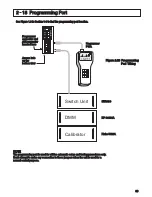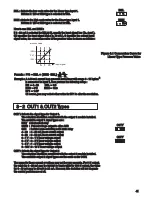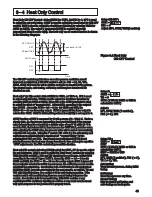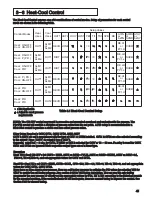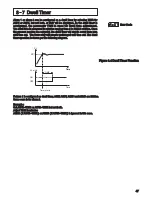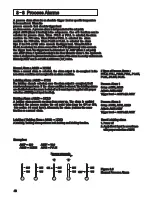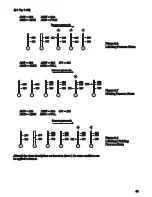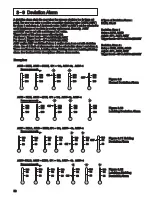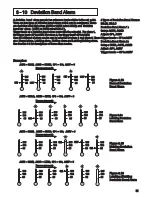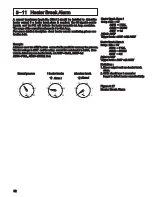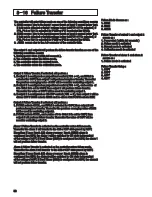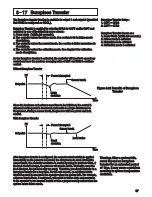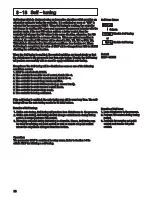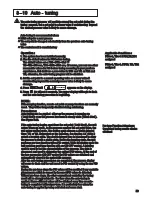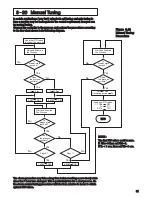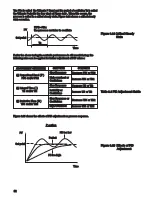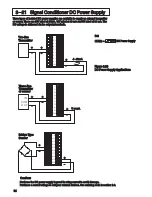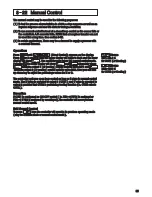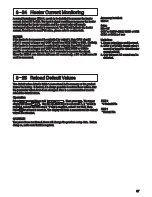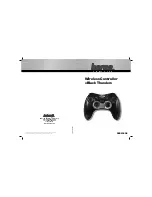
3 12 Loop Break Alarm
3 12 Loop Break Alarm
Under the parameter A1FN, select LB if alarm 1 is required to act as a loop
break alarm. Similarly, if alarm 2 is required to act as a loop break alarm, then
set OUT2 to AL2 and A2FN to LB.
One of 4 alarm modes can be selected for alarm 1 and alarm 2. These
are : Normal alarm, Latching alarm, Holding alarm and Latching/Holding alarm.
However, the Holding and Latching/Holding modes are not valid for use with
the loop break alarm, even if it is set with holding or latching/holding mode. See
for the descriptions of these alarm modes.
Section 3-8
Under the parameter A1FN, select LB if alarm 1 is required to act as a loop
break alarm. Similarly, if alarm 2 is required to act as a loop break alarm, then
set OUT2 to AL2 and A2FN to LB.
One of 4 alarm modes can be selected for alarm 1 and alarm 2. These
are : Normal alarm, Latching alarm, Holding alarm and Latching/Holding alarm.
However, the Holding and Latching/Holding modes are not valid for use with
the loop break alarm, even if it is set with holding or latching/holding mode. See
for the descriptions of these alarm modes.
Section 3-8
Loop Break Conditions are detected during a time interval of 2TI1 (double the
integral time, but 120 seconds maximum). Hence, the loop break alarm
doesn't respond as quickly as it can occur. If the process value doesn't
increase(or decrease) while the control variable MV1 has reached its maximum
(or minimum) value within the given time interval, a loop break alarm
(if configured) will be actuated.
Loop Break Conditions are detected during a time interval of 2TI1 (double the
integral time, but 120 seconds maximum). Hence, the loop break alarm
doesn't respond as quickly as it can occur. If the process value doesn't
increase(or decrease) while the control variable MV1 has reached its maximum
(or minimum) value within the given time interval, a loop break alarm
(if configured) will be actuated.
Process
Controller
Switching
Device
Switching
Device
Heater
Sensor
Figure 3.18
Loop Break Sources
Figure 3.18
Loop Break Sources
Loop Break Alarm ( if configured ) occurs when any following condition
happens:
1. Input sensor is disconnected ( or broken ).
2. Input sensor is shorted.
3. Input sensor is defective.
4. Input sensor is installed outside ( isolated from ) the process.
5. Controller fails ( A-D converter damaged ).
6. Heater ( or generally, chiller, valve, pump, motor etc. ) breaks or fails or is
uninstalled.
7. Switching device ( used to drive heater ) is open or shorted.
Loop Break Alarm ( if configured ) occurs when any following condition
happens:
1. Input sensor is disconnected ( or broken ).
2. Input sensor is shorted.
3. Input sensor is defective.
4. Input sensor is installed outside ( isolated from ) the process.
5. Controller fails ( A-D converter damaged ).
6. Heater ( or generally, chiller, valve, pump, motor etc. ) breaks or fails or is
uninstalled.
7. Switching device ( used to drive heater ) is open or shorted.
Loop Break Sources : Sensor, Controller, Heater, Switching Device
Loop Break Sources : Sensor, Controller, Heater, Switching Device
Loop Break Alarm 1
Loop Break Alarm 2
Setup : A1FN = LB
A1MD = NORM, LTCH
Setup : OUT2 = =AL2
A2FN = LB
A2MD = NORM, LTCH
Loop Break Alarm 1
Loop Break Alarm 2
Setup : A1FN = LB
A1MD = NORM, LTCH
Setup : OUT2 = =AL2
A2FN = LB
A2MD = NORM, LTCH
53

